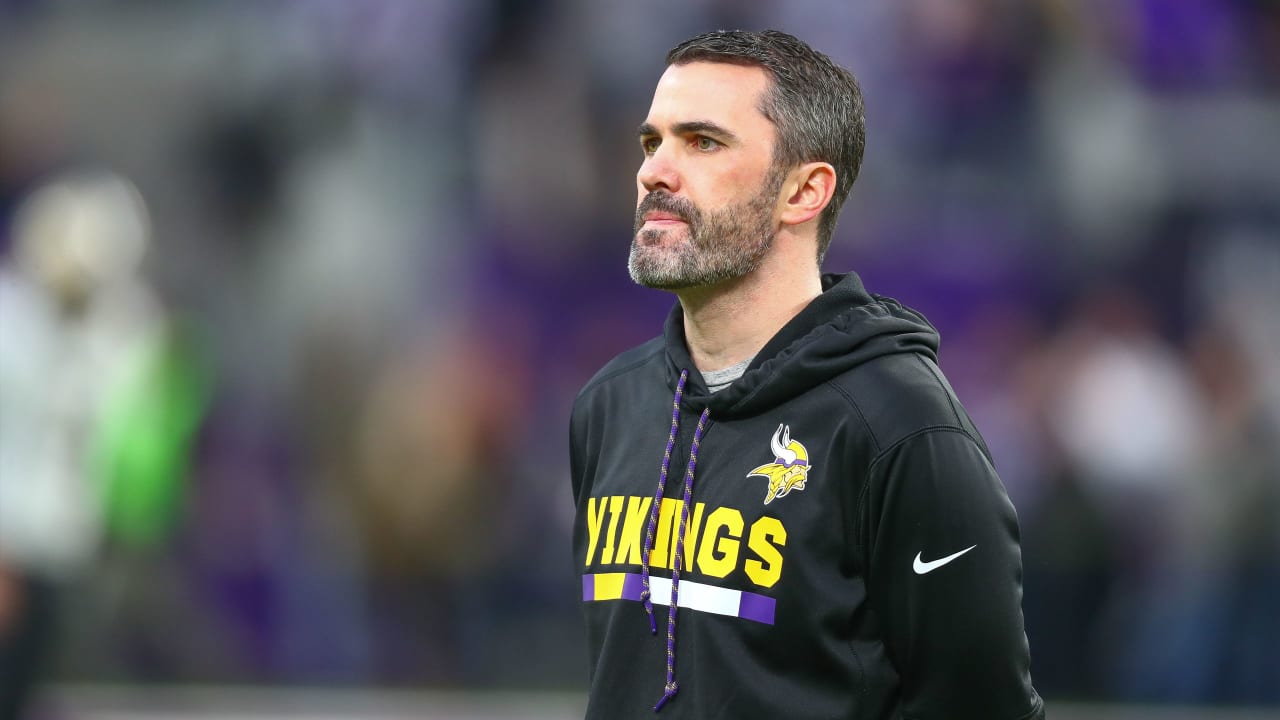Introduction: From Shadows to Spotlight
Kevin Stefanski represents an anomaly in the high-octane world of the National Football League (NFL), where animated sideline tantrums and bold media soundbites often dominate headlines. Calm, composed, and analytical, Stefanski isn’t the kind of coach who demands attention with bravado; instead, he earns it through performance, precision, and persistence. Since taking over as the Cleveland Browns’ head coach in 2020, he has slowly restructured the once-floundering franchise into a more disciplined, competitive, and tactically sound football team.
Often operating under the radar, Kevin Stefanski’s rise is a testament to the value of resilience, intelligence, and vision in professional sports. As fans and pundits increasingly scrutinize his every move, it’s worth exploring how this Ivy League-educated former safety has gone from coaching assistant to one of the NFL’s most intriguing and impactful leaders.
Early Life and Athletic Roots
Born on October 25, 1982, in Philadelphia, Pennsylvania, Kevin Stefanski grew up in a household that valued sports and intellect. His father, Ed Kevin Stefanski, carved out a notable career in NBA front offices, serving as a general manager for teams such as the Philadelphia 76ers, Toronto Raptors, and Brooklyn Nets. This exposure to professional sports management offered young Kevin a unique window into the inner workings of elite athletics.
Unlike many future football coaches, Kevin did not attend a football factory like Alabama or Ohio State. Instead, he pursued his education at the University of Pennsylvania, a prestigious Ivy League institution. There, he played safety for the Penn Quakers and gained an understanding of the game from a strategic and cerebral angle. His football IQ and leadership qualities stood out more than his raw athleticism, foreshadowing the type of coach he would one day become.
While Stefanski wasn’t drafted into the NFL as a player, the foundation laid during his collegiate years—especially his attention to detail and emphasis on teamwork—would become critical pillars of his future coaching philosophy.
Entering the NFL: Minnesota Vikings Years
Stefanski’s coaching career began in 2006 with the Minnesota Vikings when then-head coach Brad Childress hired him as an assistant. Initially working humbly, Stefanski gradually ascended through the Vikings’ coaching hierarchy. Over a 14-year tenure with the organization, he worked under three different head coaches—Childress, Leslie Frazier, and Mike Zimmer—and held roles coaching tight ends, running backs, and quarterbacks. He ultimately served as the team’s offensive coordinator in 2019.

What stood out most about Stefanski during his time in Minnesota was his versatility and willingness to adapt. He thrived in diverse roles, constantly learning and fine-tuning his offensive philosophy. When Case Keenum led the Vikings to the NFC Championship Game in 2017, Stefanski played a key part in developing the game plans that helped maximize Keenum’s skill set.
By the end of his time in Minnesota, Kevin Stefanski had established a reputation as a coach with both depth and breadth of knowledge, capable of teaching fundamentals and constructing advanced schemes. It wasn’t long before other franchises came calling.
Landing in Cleveland: A Franchise Starved for Leadership
In January 2020, Kevin Stefanski was officially hired as the head coach of the Cleveland Browns, a team notorious for its instability and revolving door of leadership. At the time, Cleveland was coming off a disappointing season despite boasting one of the most talented rosters in years. Frequent coaching changes had turned the team into a cautionary tale of squandered potential.
Stefanski inherited a roster filled with stars like Baker Mayfield, Nick Chubb, Myles Garrett, and Odell Beckham Jr.. Still, he also faced significant challenges: inflated egos, a losing culture, and a pandemic that would disrupt traditional team-building processes.
Despite the circumstances, Stefanski’s impact was immediate and profound. The Browns finished the 2020 season with an 11–5 record and made the playoffs for the first time since 2002. Even more notably, they defeated the Pittsburgh Steelers in the Wild Card round, marking their first postseason win since 1994. Stefanski, who had to miss that playoff game due to a positive COVID-19 test, coached remotely and was praised for his preparedness and leadership. He was later named the NFL Coach of the Year by the Associated Press, becoming the first Browns coach to earn that honor since Forrest Gregg in 1976.
Coaching Philosophy: Calmness, Consistency, and Control
One of the defining characteristics of Kevin Stefanski’s coaching style is his calm and methodical demeanor. Unlike more animated coaches who rely on emotional highs and lows, Kevin Stefanski is even-keeled, calculated, and deeply invested in preparation. He emphasizes situational football—training his players to understand down-and-distance, time management, and optimal decision-making under pressure.
Stefanski is also known for leveraging analytics. The Browns were among the NFL’s first teams to fully embrace advanced metrics in decision-making, from fourth-down conversions to personnel groupings. While critics occasionally question his adherence to statistical models over gut instinct, Stefanski remains resolute in his belief that analytics, when used correctly, improve a team’s chances of success.
Another cornerstone of his philosophy is empowering his coordinators and assistants. Stefanski encourages collaboration and maintains an open-door policy with both players and staff. This fosters a culture of trust and accountability—a stark contrast to the dysfunction plaguing previous Cleveland regimes.
A Statistical Overview: Stefanski’s Coaching Performance
Here’s a breakdown of Stefanski’s performance as the Browns’ head coach through the 2024 season:
| Year | Record | Playoff Appearance | Highlights |
| 2020 | 11–5 | Yes (1–1) | First playoff win since 1994; Coach of the Year |
| 2021 | 8–9 | No | Injury-plagued roster; QB regression |
| 2022 | 7–10 | No | Transition year with Deshaun Watson |
| 2023 | 11–6 | Yes (0–1) | Elite defense, playoff berth |
| 2024 | 3–14 | No | Injuries, OC and OL coaches dismissed |

Despite a rough 2024 season, Kevin Stefanski has guided the Browns to two playoff appearances in five seasons—an achievement that, for much of the 21st century, seemed unattainable for the franchise.
Challenges and Controversies: Navigating Turbulent Waters
While Stefanski’s early success won praise, the subsequent seasons presented challenges that tested his leadership. In 2021, internal strife and declining quarterback play led to Baker Mayfield’s departure. The acquisition of Deshaun Watson in 2022 introduced a new wave of complications, both football-related and reputational.
Watson’s off-field legal troubles and an extended NFL suspension put Stefanski in an unenviable position. Managing locker room dynamics while integrating a polarizing quarterback required finesse and diplomacy. Though Watson eventually returned to the field, his performances were inconsistent, and the team struggled to find rhythm.
In 2024, the Browns suffered one of the worst seasons under Stefanski, finishing 3–14. Injuries decimated the roster, and offensive inefficiency forced a reevaluation of the coaching staff. Stefanski responded by letting go of offensive coordinator Ken Dorsey and offensive line coach Andy Dickerson, ushering in a new era led by coordinator Tommy Rees and line coach Mike Bloomgren.
2025 and Beyond: Pressure to Perform
As the Browns gear up for the 2025 season, the spotlight on Kevin Stefanski has never been more intense. The team has made significant investments in player development and is hopeful that a healthy roster and revamped coaching staff will reverse their fortunes.
One major storyline will be the quarterback competition. With Deshaun Watson under scrutiny and veteran backup Joe Flacco nearing the end of his career, the team is exploring young talents such as Shedeur Sanders and Dillon Gabriel. Stefanski’s expertise in quarterback development will be crucial in guiding this transition.
Stefanski continues to be a respected leader in the Cleveland community off the field. He participates in charitable events, supports educational initiatives, and promotes mental health awareness among athletes. His commitment to building a winning team and a strong organization makes him an invaluable asset.
The Legacy of Kevin Stefanski: Measured Impact in a Volatile League
Kevin Stefanski’s measured, methodical approach stands out in an NFL era dominated by personalities and quick fixes. His ability to transform the Cleveland Browns’ culture, once synonymous with dysfunction, into one of respectability and competitiveness is no small feat.
Critics may point to inconsistencies in performance or conservative play-calling, but the broader picture reveals a coach deeply committed to sustainable success. His emphasis on fundamentals, analytics, and player accountability has laid the groundwork for long-term growth. Whether or not he brings a Super Bowl to Cleveland, Stefanski’s influence will be felt for years.

Conclusion: A Model of Modern Coaching
Kevin Stefanski is not your typical NFL head coach, and that’s precisely why he may be the perfect fit for the Cleveland Browns. Kevin Stefanski’s unique blend of intellect, stability, and strategic acumen could distinguish between another false dawn and a genuine new era as the team enters a critical juncture in its development.
His journey from an Ivy League defensive back to NFL Coach of the Year offers a compelling lesson in patience, preparation, and vision. In a league where fortunes shift weekly and coaching seats grow hot overnight, Kevin Stefanski remains a cool, steady hand guiding the Browns into uncharted territory—with purpose, pride, and quiet determination.




